Abstract
Seismology is providing a more sharply focused picture of the Earth's internal structure that should lead to improved models of mantle dynamics. Lateral variations in seismic wave speeds have been documented in all major layers of the Earth external to its core, with horizontal scale lengths ranging from 10 to 104 km. These variations can be described in terms of three types of heterogeneity: compositional, aeolotropic, and thermobaric. All three types are represented in the lithosphere, but the properties of the deeper inhomogeneities remain hypothetical. It is argued that sublithospheric continental root structures are likely to involve compositional as well as thermobaric heterogeneities. The high-velocity anomalies characteristic of subduction zones—seismic evidence for detached and sinking thermal boundary layers—in some areas appear to extend below the seismicity cutoff and into the lower mantle or mesosphere. Mass exchange between the upper and lower mantles is implied, but the magnitude of the flux relative to the total mass flux involved in plate circulations is as yet unknown. Other observations, such as the vertical travel time anomalies seen in the western Pacific, may yield additional constraints on the flow geometries, but further documentation is necessary. Thermobaric heterogeneities associated with a thermal boundary layer at the base of the mantle could provide the explanation for some of the observations of heterogeneities in the deep mantle. The evidence for very small scale inhomogeneities (<50 km) in region D″ and for topography on the core-mantle interface motivate the speculation that there is a chemical boundary layer at this interface, as well as a thermal one.
Keywords: seismology, tectonics, mantle, convection
Full text
PDF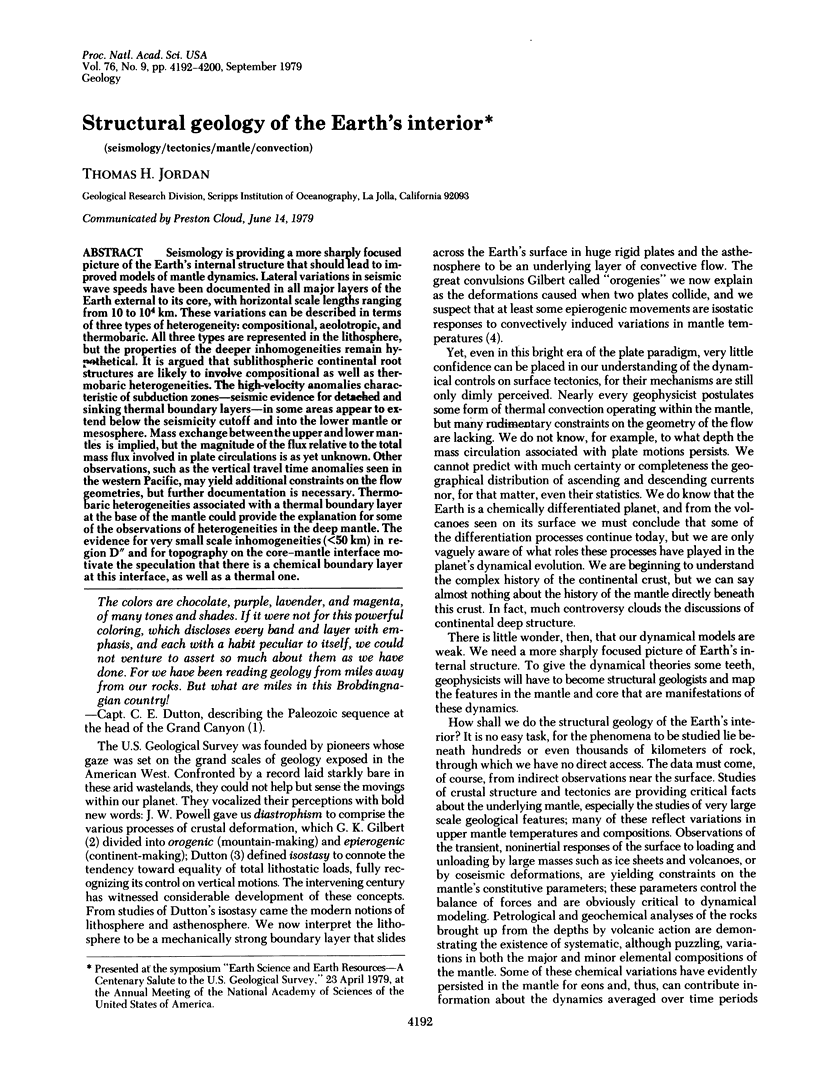
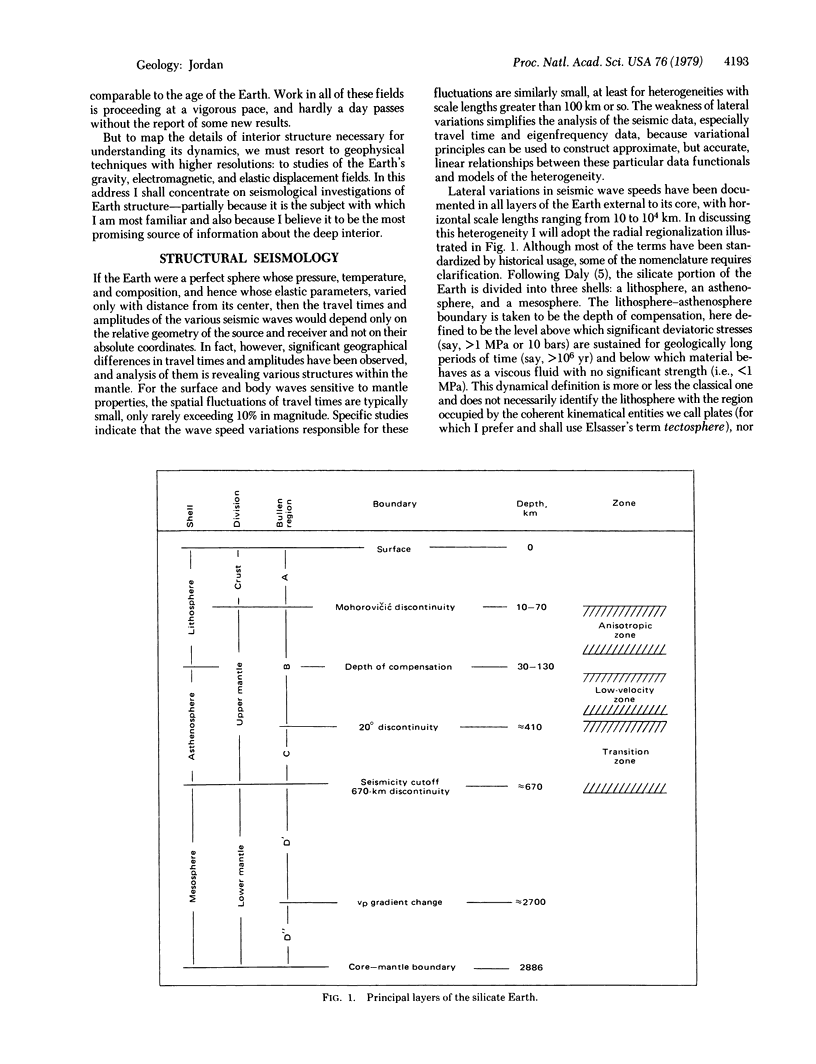
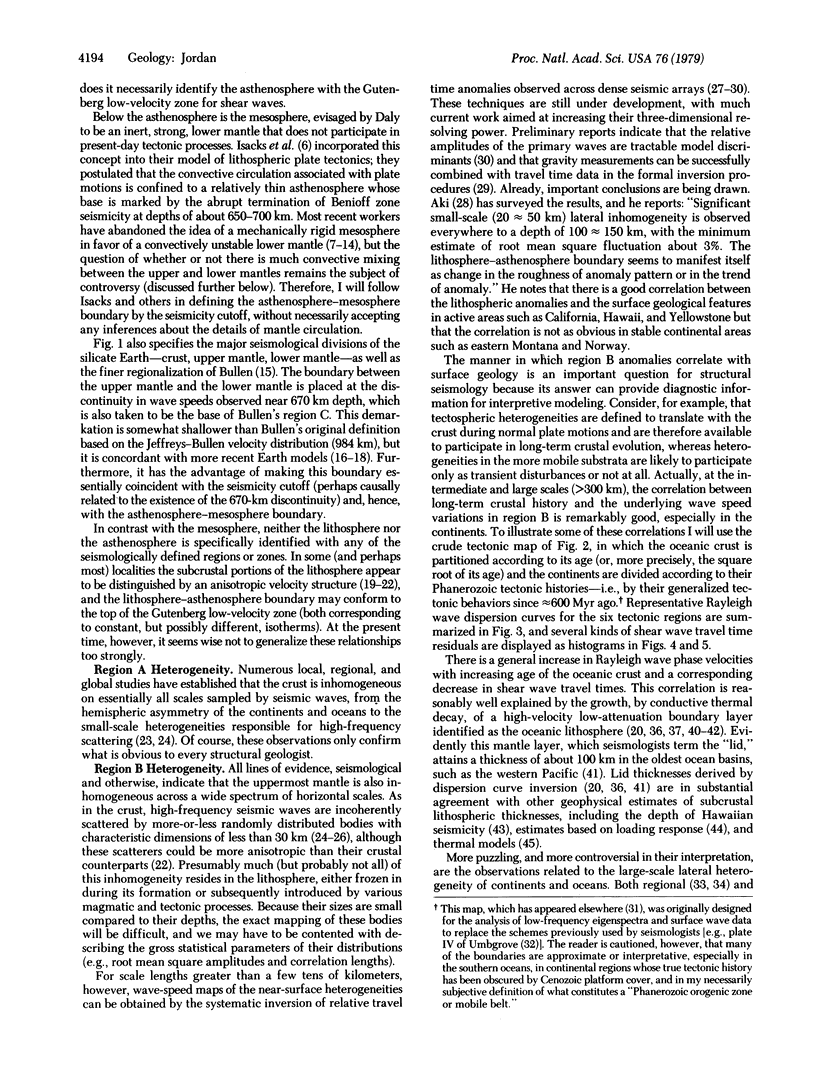
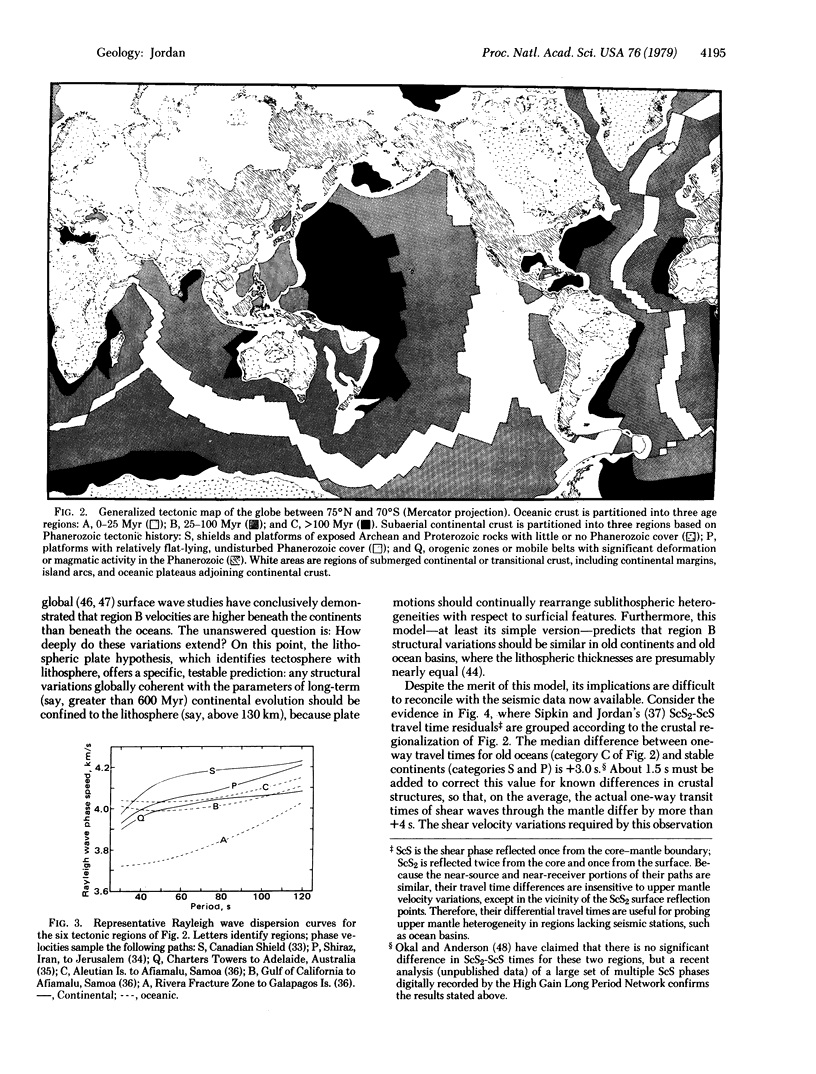
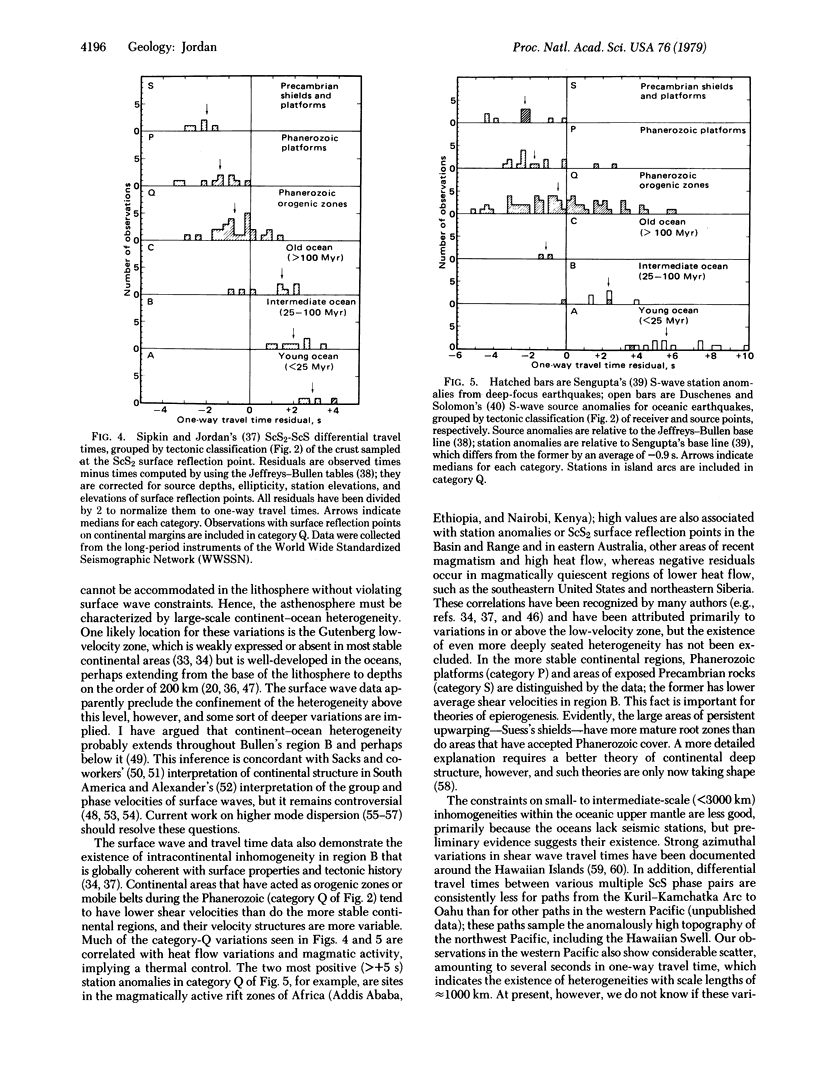
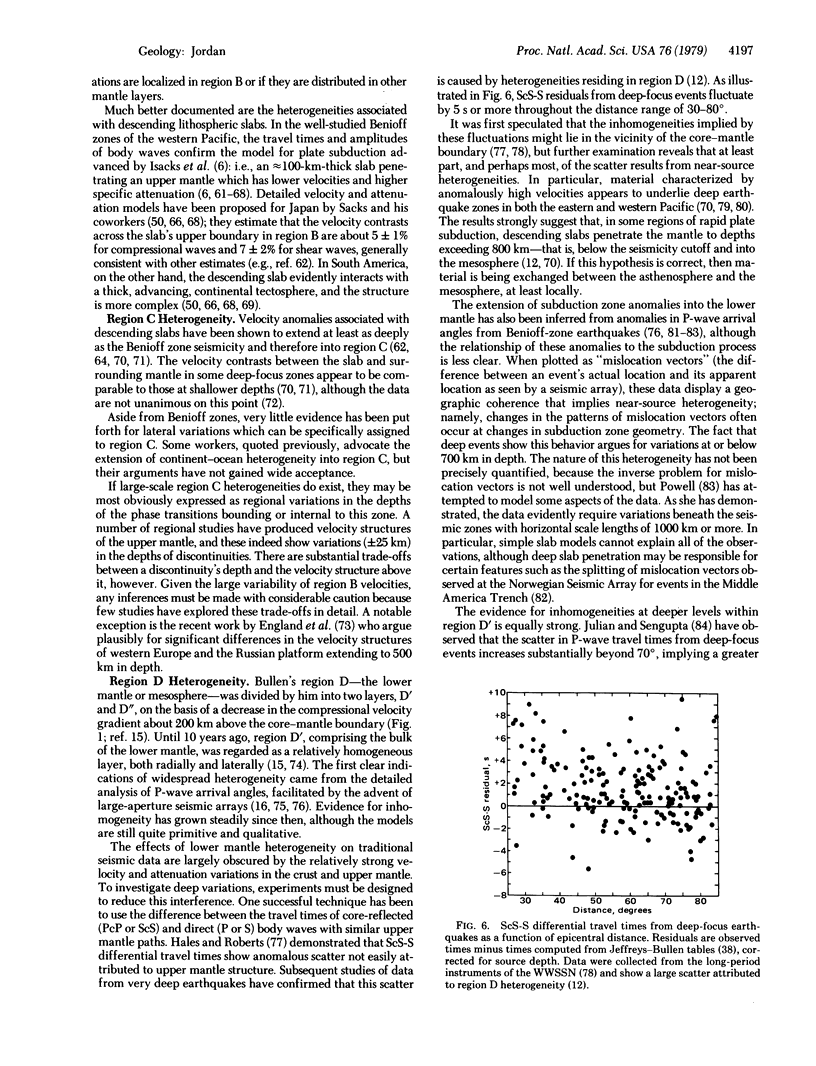
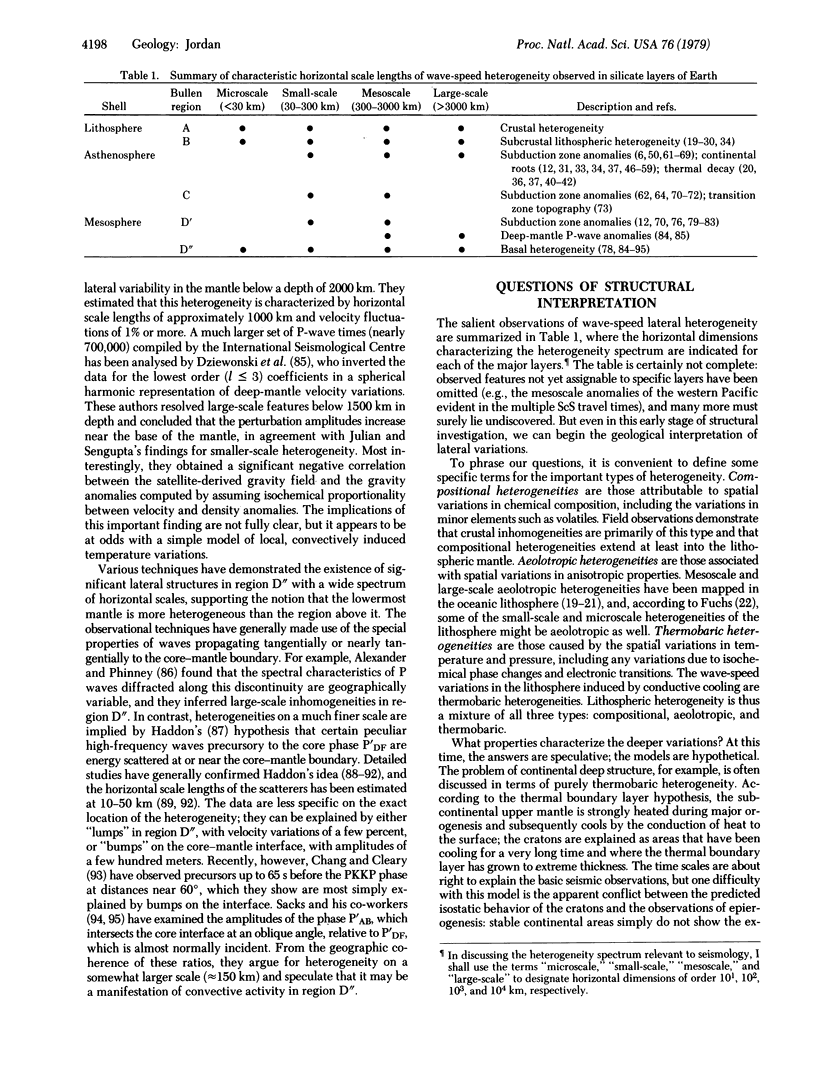

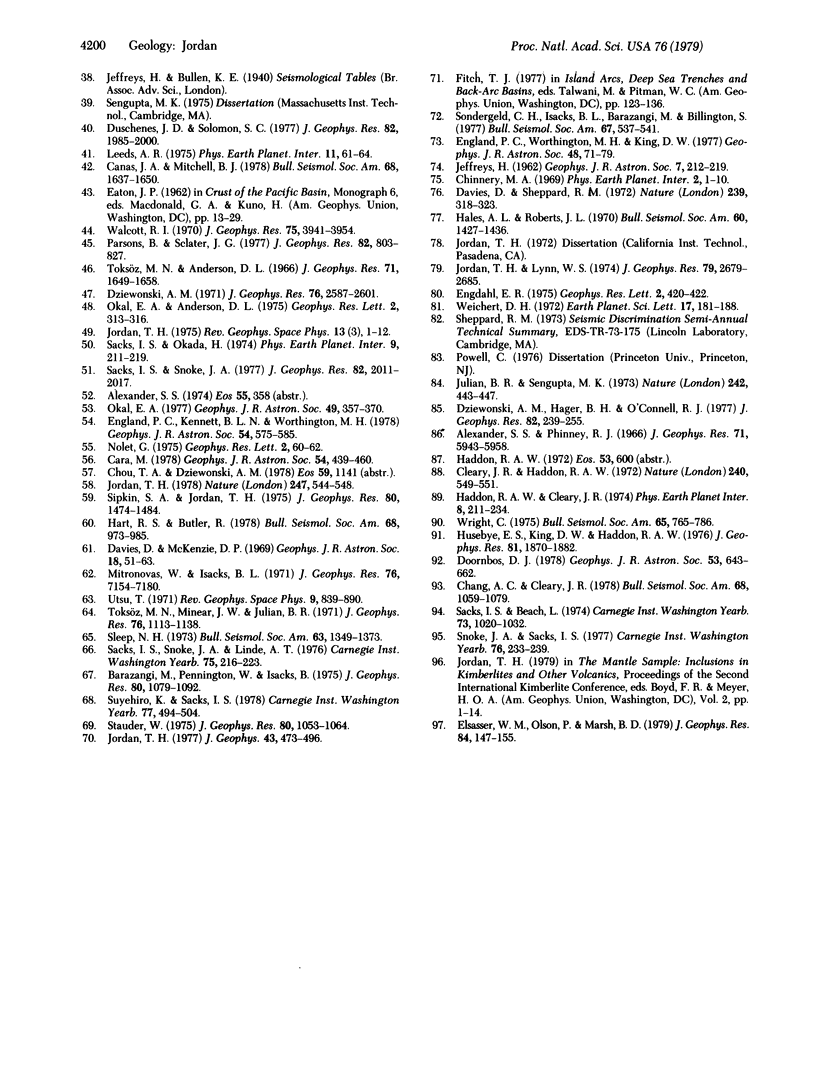
Images in this article
Selected References
These references are in PubMed. This may not be the complete list of references from this article.
- Anderson D. L., Sammis C., Jordan T. Composition and evolution of the mantle and core. Science. 1971 Mar 19;171(3976):1103–1112. doi: 10.1126/science.171.3976.1103. [DOI] [PubMed] [Google Scholar]
- Davies D., Sheppard R. M. Lateral heterogeneity in the Earth's mantle. Nature. 1972 Oct 6;239(5371):318–323. doi: 10.1038/239318a0. [DOI] [PubMed] [Google Scholar]



